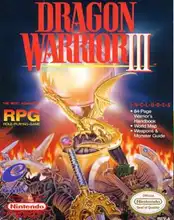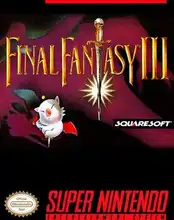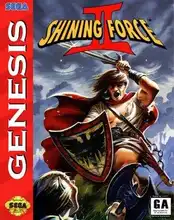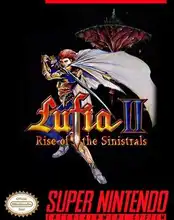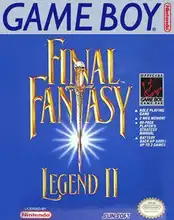Remember the days when battles unfolded not in a frantic blur, but with thoughtful pauses, strategic decisions, and the satisfying click of confirming your command? That's the enduring magic of Turn-Based Combat games. They offer a different kind of thrill, one built on planning and prediction rather than lightning-fast reflexes.
For many of us who grew up with pixelated adventures and floppy disk treasures, turn-based systems were the backbone of countless hours spent glued to the screen. Whether commanding a party of heroes, maneuvering tanks across a grid, or building an empire one phase at a time, this style of gameplay fostered a deeper connection to the mechanics and the world. Let's dive into why these retro games still hold such a special place in our hearts.
What Exactly Is Turn-Based Combat?
At its core, turn-based combat is simple: players (and sometimes the AI) take turns performing actions. Unlike real-time games where everything happens simultaneously, here you have distinct phases. You choose what your characters or units do – move, attack, use an item, cast a spell – and then you hit "end turn." Then, the enemy gets their go.
This structure removes the pressure of immediate reaction and replaces it with the challenge of forward-thinking. Every move matters because you have time to consider the consequences. It's like a strategic chess match, but with dragons, laser guns, or magic spells instead of rooks and pawns.
Why We Love Taking Our Time: The Appeal
In a world of constant stimulation, the deliberate pace of turn-based combat is a refreshing change. It appeals to a different part of our gaming brain.
- Strategic Depth: Without the need for twitch reflexes, the focus shifts entirely to strategy. You need to think about unit positioning, resource management (like mana or action points), enemy patterns, and setting up future moves.
- Less Stress, More Thought: You can pause, analyze the situation, and weigh your options without the clock ticking down (usually!). This makes them incredibly accessible and allows for complex tactical scenarios to unfold.
- Character/Unit Focus: Because you're directing each individual's action, you often feel more connected to your party or army. You see their strengths and weaknesses highlighted in each turn.
- Predictable Outcomes (Mostly): While RNG (random number generation) can still play a role, the turn-based nature often makes outcomes more predictable than real-time chaos, allowing players to feel more in control of their destiny.
A Trip Down Memory Lane: Classic Turn-Based Feels
Think back to some of the giants of yesteryear. Many of the most beloved retro games employed turn-based systems.
- JRPGs: From the early Final Fantasy games on the NES and SNES to Dragon Quest and Phantasy Star, the turn-based battle screen was iconic. You'd line up your party, select 'Attack', 'Magic', 'Item', or 'Defend', and watch the sprites clash. These games built epic narratives around this combat core.
- Tactical RPGs: Games like X-COM: UFO Defense (the original DOS classic!), Final Fantasy Tactics, and Shining Force added a grid-based movement layer, making positioning just as crucial as action choice. Flanking enemies, using cover, and managing elevation became key tactical considerations.
- Strategy Games: Before RTS ruled the roost, turn-based strategy games like Civilization, Master of Orion, and Heroes of Might and Magic offered grand scope. You'd manage empires, explore maps, and engage in tactical battles, all on your own terms, turn by turn. Even artillery games like Worms brought turn-based fun to local multiplayer.
These games weren't just about clicking buttons; they were about making decisions. They demanded patience and rewarded clever planning.
The Enduring Legacy
Turn-based combat is far from dead. It continues to thrive in modern titles, but the classics still beckon. If you're feeling that nostalgic pull, many of these old gems are readily available. Platforms like GOG.com offer DRM-free versions of PC classics, often pre-configured to run on modern systems. For console classics, emulation through tools like DOSBox or exploring resources like the Internet Archive can bring those memories back to life.
Firing up an old turn-based favorite is like visiting an old friend. The graphics might be simple, the sound effects charmingly retro, but the strategic depth and satisfying rhythm of combat remain timeless.
FAQ: Your Turn to Ask!
- Are all retro JRPGs turn-based? Not all, but the vast majority of classic JRPGs from the 8-bit and 16-bit eras used turn-based or ATB (Active Time Battle, a variation that adds a time element but is still fundamentally turn-based) systems.
- What's the difference between turn-based strategy and tactical RPGs? Turn-based strategy often involves managing larger armies or empires on a grand scale, with tactical combat being one component. Tactical RPGs usually focus on a smaller party of unique characters moving and fighting on a grid, blending RPG progression with tactical combat.
- Why do some people prefer real-time over turn-based? Real-time combat offers immediacy, faster pace, and tests reflexes and multitasking. It provides a different kind of challenge and excitement compared to the more deliberate pace of turn-based games. It's really down to personal preference!
Whether you're revisiting a childhood favorite or discovering a classic for the first time, diving into Turn-Based Combat games is a rewarding experience. It's a chance to slow down, think, and appreciate the strategic artistry that defined an era of gaming and continues to captivate players today. What are some of your most cherished turn-based memories?

